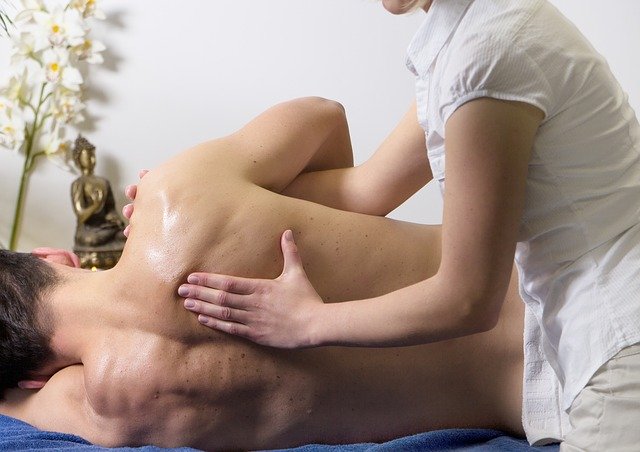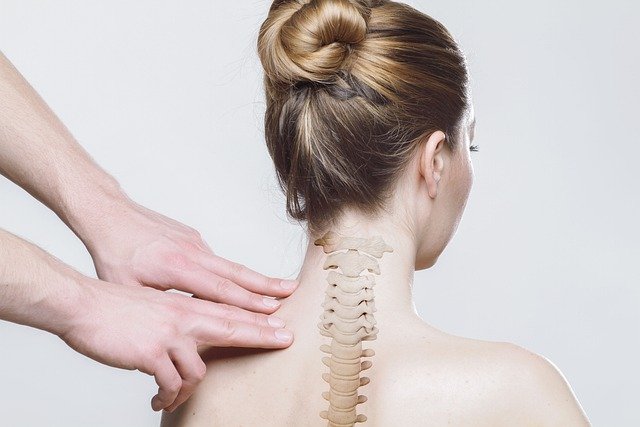Neck pain doesn’t just interfere with your daily life, it can also interfere with the quality of your sleep. Because neck pain is so troublesome, it is important to take steps to get this sensitive part of the body back to normal. Fortunately, there are several exercises that can strengthen the neck and eliminate neck pain.
Neck pain usually emanates from the back of the neck, as most people refer to pain in the front as throat pain. When people complain about neck pain they are referring to discomfort in below the head and above the scapulas. Often, the pain can be a result of misalignment in the load-bearing joints like the shoulders, hips, and knees. It can also be caused by stress and other psychosocial reasons. According to research, neck pain can also be a result of whiplash, sports-related injuries, and rare conditions like tumors. Others have issues related to sprains or strains, concussions, herniated discs, or osteoarthritis.
Medical experts divide neck pain into acute and chronic conditions and into different grades, based on degree of pain and symptoms. Acute neck pain lasts about a week, while chronic pain lasts longer. People who have grade I neck pain can use stretches and home remedies for their discomfort. Grade II neck pain usually involves neurologic issues, and those issues increase in grade III pain like nerve root compression.
Chiropractors can help eliminate neck pain. According to research, patients with acute neck pain who receive care from a chiropractor find the results satisfying. How chiropractors help neck pain is through manipulation, massage, and recommended exercises. They can also recommend other natural back pain remedies.
5 Best Exercises to Effectively Eliminate Neck Pain
These are five of the best exercises that help eliminate neck pain. Research shows that they work, as long as they are done regularly and in a manner that does not further injure the neck.
Rolling the Shoulders
The first exercise is a shoulder roll. This exercise should be done in a seated posture with the feet flat on the floor, the pelvis rolled slightly forward, the sternum lifted, and the neck relaxed. Once you are in the perfect seated posture, place your hands on your thighs and move the shoulders in big circles. Start moving them forward a few times, then move them backwards.
This exercise helps the cervicothoracic muscles, and warms them up for the next exercises. If you experience any pain while rolling your shoulders, then you should stop. If possible, roll the shoulders for a minute in one direction, then a minute in the other direction. There is no reason to use any weight while doing this exercise, as it is meant to get the blood flowing, not increase strength.
Double Chin Move
Another helpful exercise to eliminate neck pain is the retraction move. Retraction move can help the neck get back into alignment. People who do this exercise often remember it as the double-chin move, because if you do it properly, you will notice that you get a temporary double chin.
This is another exercise you can do from a properly seated posture with the feet flat on the floor and the back in alignment. The double-chin move will help move the head and shoulders back where they belong. For this move, put your finger on the center of your upper lip. Keeping the shoulders in place, use the finger to gently push the head back, making a double chin. If this causes pain, then stop. Otherwise, move the head back into the correct alignment 15 to 20 times.
Neck Rolls
After the shoulder rolls and the double-chin move, another beneficial neck exercise is the neck roll. It is important to pay attention to discomfort during this exercise. Again, this exercise is done in a seated posture. Hands can stay on the thighs, but they can also be used to help increase the stretch, too.
To start, drop one side of the head toward the same-side shoulder. Then, roll the head slowly so the other ear is dropped to the same-side shoulder. After reaching the other side, you bring the head back to neutral. Then, repeat by starting on the other side. It is best to avoid hyperextension, because it puts too much pressure on the neck joints. The moves should be gentle, and not cause pain.
However, if you are looking for more stretch on the sides of the neck and shoulder, you can use your hands. The only stipulation is to not roll the neck. Drop the right ear to the right shoulder, then use the right hand on the left side of the head to gently help increase the stretch. Repeat on the opposite side.
Shower Stretch to eliminate neck pain
This is a stretch that gets into the upper back, which can provide some relief and eliminate neck pain . For this exercise, stand facing a wall. During the stretch, you might find yourself adjusting your distance from the wall. Put your palms on the wall with the arms straight. Stand about 3/4ths of an arms-length away from the wall and adjust as necessary. Imagine that you are standing in a shower stall, and your hands are on the spout with your arms replicating the water coming from it.
Tuck your chin toward your chest and press your chest toward the wall while keeping your arms where they are. You should notice a stretch in the shoulders and the back of the neck. If you need more stretch, put a bend in the waist as you lean your chest more toward the wall.
Front Chest Stretch
Even though most neck pain is the back, having tight pecs can pull on the shoulder joint, and then neck. This is another standing stretch that relies on a wall, too. Stand about six inches away from the wall to begin.
Turn to face the left, then extend the right arm on the wall so your arm is behind you. Move closer to the wall so you shoulder and arm are touching the wall. Then, turn your chest away from the wall to experience the stretch in the pecs. Keep your head and neck in alignment, as you might notice the stretch move up into your neck, too
Dr. Brent Wells founded Better Health Chiropractic & Physical Rehab in 1998. He is currently leading 10,000 Alaskans to more active and pain-free lifestyles without drugs or invasive surgeries. He brings a progressive and highly innovative approach to chiropractic care in Anchorage. Dr. Wells continues to further his education with ongoing studies in spine conditions, neurology, physical rehabilitation, biomechanics, occupational ergonomics, whiplash, and brain injury traumatology. He is also a member of the American Chiropractic Association and the American Academy of Spine Physicians.










